#archduke franz karl of austria
Text

Widowed for two years, after his first wife Margarete of Saxony gave him no children, [archduke] Karl Ludwig had married in 1862 this princess [Maria Annunziata] of the branch of the Bourbons of Naples, who gave him three sons: the archdukes Franz Ferdinand, Otto and Ferdinand Karl [and also a daughter, archduchess Margarete]. However it soon became apparent that the young woman was suffering from tuberculosis, her frequent fits of coughing, her pale complexion being signs of the disease. Her condition aggravated at the beginning of 1871. [Archduchess] Sophie is worried: “If she took an inflammation of the lungs, she would succumb to it”, she fears at the beginning of January. By May 1, the situation became alarming: Maria Annunziata “was wasting away fast. She’s an skeleton”. Informed the next day that “Annunziata is worse and asked to be administered”, Sophie goes to see her immediately. She attends on her knees to the administration of the extreme unction. After which, the dying woman wishes to be alone with her parents-in-law. She asks them to watch over her husband and children. By way of farewell, [archduke] Franz Karl makes the sign of the cross on her forehead, mouth and chest. Two days later, the poor young woman gave back her soul to God.
Bled, Jean-Paul (2018). Sophie de Habsbourg
ON THIS DAY, IN 1871, ARCHDUCHESS MARIA ANNUNZIATA OF AUSTRIA (NÉE PRINCESS OF BOURBON-TWO SICILIES) DIED. She was born in 1843 as the eldest daughter of King Ferdinando II of the Two Sicilies and his second wife Archduchess Maria Theresa of Austria. After the deposition of the Neapolitan Bourbons in 1861, she went into exile with her whole family to Rome. A year later she married her second cousin Archduke Karl Ludwig, a younger brother of Emperor Franz Josef of Austria. They had four children, among them Archduke Franz Ferdinand, whose assassination would trigger World War I, and Archduke Otto, the father of Karl I, the last Emperor of Austria.
Annunziata had suffered from a lung illness her whole life, and after the birth of her last child in 1870 her health worsened, dying a year later aged only 28-years-old. She was buried at the Capuchin Crypt in Vienna, the traditional resting place of the Habsburgs.
#i wish we knew more about her tbh#other than ''daughter of- wife of- mother of-''#but she seems to have been a nice person. apparently her sisters-in-law marie and mathilde were very fond of her#on this day in history#maria annunziata of bourbon two sicilies archduchess of austria#sophie of bavaria archduchess of austria#archduke franz karl of austria#house of bourbon two sicilies#historicwomendaily
20 notes
·
View notes
Text
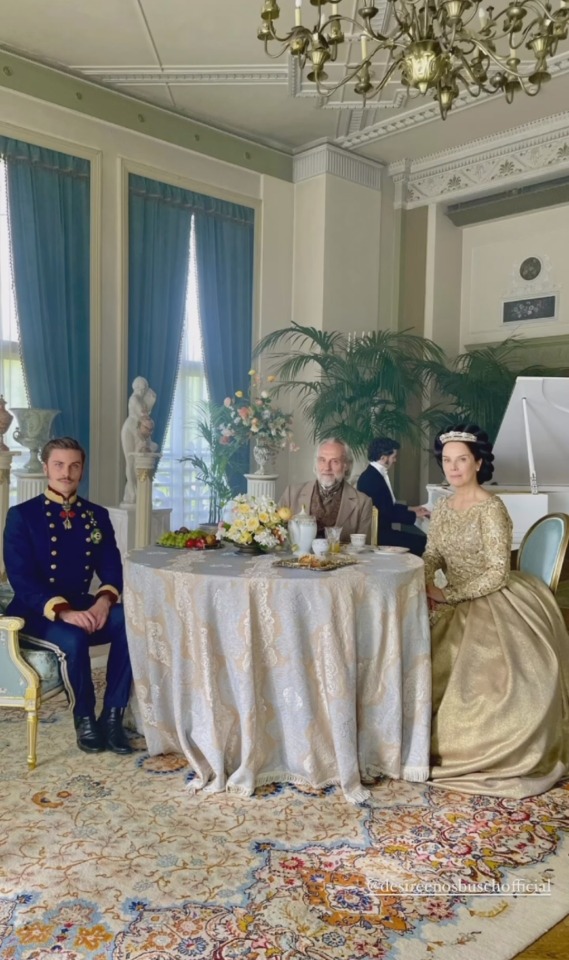
Jannik Schümann (Emperor Franz Joseph), Daniel Friedrich (Archduke Franz Karl) and Désirée Nosbusch (Archduchess Sophie) behind the scenes of the third season of Sisi (2021).
#Sisi#Sisi (2021)#costume drama#historical drama#period drama#Jannik Schümann#Daniel Friedrich#Désirée Nosbusch#emperor franz joseph#Franz Joseph of Austria#Archduke Franz Karl of Austria#Archduchess Sophie of Austria#Princess Sophie of Bavaria#german series#german tv#behind the scenes#sisi.rtl
5 notes
·
View notes
Text

Archduke Franz Salvator Maria Joseph Ferdinand Karl Leopold Anton of Padua, Johann Baptist Januarius Aloys Gonzaga Rainer Benedikt Bernhard of Austria
Austrian vintage postcard
#vintage#tarjeta#joseph#maria joseph ferdinand karl leopold anton#franz salvator#salvator#maria#archduke#briefkaart#franz#postcard#photography#gonzaga#leopold#postal#carte postale#sepia#padua#ephemera#januarius aloys#baptist#anton#historic#karl#benedikt bernhard#austria#aloys#ansichtskarte#rainer#bernhard
1 note
·
View note
Text
The updated list of nominees so far:
France:
Jean Lannes
Josephine de Beauharnais
Thérésa Tallien
Jean-Andoche Junot
Joseph Fouché
Charles Maurice de Talleyrand
Joachim Murat
Michel Ney
Jean-Baptiste Bernadotte (Charles XIV of Sweden)
Louis-Francois Lejeune
Pierre Jacques Étienne Cambrinne
Napoleon I
Marshal Louis-Gabriel Suchet
Jacques de Trobriand
Jean de dieu soult.
François-Étienne-Christophe Kellermann
Louis Davout
Pauline Bonaparte, Duchess of Guastalla
Eugène de Beauharnais
Jean-Baptiste Bessières
Antoine-Jean Gros
Jérôme Bonaparte
Andre Masséna
England:
Richard Sharpe (The Sharpe Series)
Tom Pullings (Master and Commander)
Arthur Wellesley, 1st Duke of Wellington
Jonathan Strange (Jonathan Strange & Mr. Norrell)
Captain Jack Aubrey (Aubrey/Maturin books)
Horatio Hornblower (the Hornblower Books)
William Laurence (The Temeraire Series)
Austria:
Klemens von Metternich
Friedrich Bianchi, Duke of Casalanza
Franz I/II
Archduke Karl
Marie Louise
Poland:
Wincenty Krasiński
Józef Antoni Poniatowski
Józef Zajączek
Maria Walewska
Russia:
Alexander I Pavlovich
Alexander Andreevich Durov
Prince Andrei (War and Peace)
Pyotr Bagration
Mikhail Miloradovich
Levin August von Bennigsen
Prussia:
Louise von Mecklenburg-Strelitz
Gebard von Blücher
Carl von Clausewitz
Frederick William III
Gerhard von Scharnhorst
Louis Ferdinand of Prussia
Friederike of Mecklenburg-Strelitz
The Netherlands:
Ida St Elme
Wiliam, Prince of Orange
The Papal States:
Pius VII
#napoleonic sexyman tournament#there is something mildly funny about the English being overwhelmingly fictional Englishmen#and Wellington
54 notes
·
View notes
Text
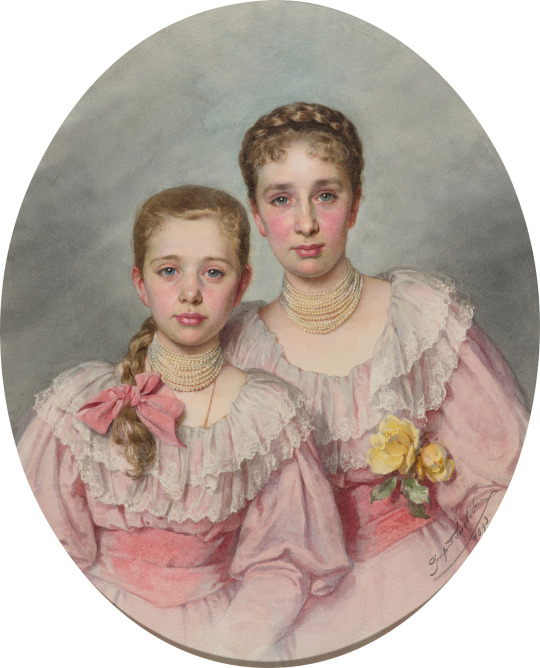
Archduchesses Maria Annunziata (1876-1961) and Elisabeth Amalie of Austria (1878-1960). By Josefine Swoboda.
They were the daughters of Archduke Karl Ludwig of Austria, brother of Emperor Franz Joseph.
Maria Annunziata was Abbess of the Theresia Convent in the Hradschin, Prague; and Elisabeth Amalie Princess of Liechtenstein through her marriage to Prince Alois of Liechtenstein.
#josefine swoboda#liechtenstein museum#haus liechtenstein#german aristocracy#maria annunziata of austria#elisabeth amalie of austria#princess of liechtenstein#fürstentum liechtenstein#erzherzogtum österreich#haus habsburg lothringen#house of habsburg lorraine#erzherzogin#Theresian Institution of Noble Ladies#Tereziánský ústav šlechtičen
19 notes
·
View notes
Photo

Amalie Auguste of Bavaria, Queen of Saxony, early 1800s.
Amalie Auguste (13 November 1801, in Munich – 8 November 1877, in Dresden) was a Bavarian princess by birth and Queen of Saxony by marriage to King John of Saxony. Amalie was the fourth child of King Maximilian I Joseph of Bavaria and his second wife Caroline of Baden. She was the identical twin sister of Elisabeth Louise, later Queen of Prussia as wife of Frederick William IV of Prussia. Three other sisters married King Frederick Augustus II of Saxony, Archduke Franz Karl of Austria and Maximilian Joseph, Duke in Bavaria.
#Amalie Auguste#Amalie Auguste of Bavaria#twin#twin sisters#female portrait#female#portrait#classical art#fine arts#woman#princess#queen#nobility#noble#aristocrat#western civilization#europe#european#europa#world history
58 notes
·
View notes
Photo



The three wives of Archduke Karl Ludwig of Austria, younger brother of Franz Joseph I.
Margaretha of Saxony: His first wife was his cousin, they were married on November 4th, 1856. The marriage was described as happy but did not last long. Margaretha contracted typhoid while on a trip to Italy and died aged 18 on September 15th, 1858. The couple didn’t have any children.
Maria Annunciata of Bourbon-Two Sicilies: His second marriage was in October of 1862, and was also said to have been happy. The bride suffered from poor health, having had a seizure during mass the day of the wedding and was later found to be suffering from tuberculosis. They would have four children together, Archduke Franz Ferdinand, Archduke Otto, Archduke Ferdinand Karl, and Archduchess Margarete Sophie. Maria Annunciata became increasingly ill after their daughter’s birth, and died of tuberculosis on May 4th, 1871 when she was 28 years old.
Maria Theresa of Portugal: His third marriage was on July 23, 1873 and the bride was described as one of the most beautiful women in Europe. The couple had two daughters together, Archduchess Maria Annunciata (Named after his second wife) and Archduchess Elisabeth Amalie. It was not a happy marriage, as Karl Ludwig is said to have been very cruel to her. Maria Theresa stood in during court functions for her sister in law, Empress Elisabeth, who withdrew from court life after her son’s suicide. Karl Ludwig died in 1896, and Maria Theresa would outlive him by nearly 50 years, dying during the Second World War.
#archduke karl ludwig#Margaretha of Saxony#Maria Annunciata of Bourbon-Two Sicilies#Maria Theresa of Portugal#house of habsburg lorraine#austria#long live the queue
30 notes
·
View notes
Photo

Archduke Franz Karl of Austria (1802–1878). By Leopold Kupelwieser.
He was the father of two emperors: Franz Joseph I of Austria and Maximilian I of Mexico. Through his third son Karl Ludwig, he was the grandfather of Archduke Franz Ferdinand of Austria (whose assassination sparked the hostilities that led to the outbreak of World War I) and the great-grandfather of the last Habsburg emperor Karl I.
#Leopold Kupelwieser#erzherzog#archduke#erzherzog franz karl#haus habsburg lothringen#full length portrait#house of habsburg lorraine#full-length portrait#in armour#kaisertum österreich#mexican empire#imperio mexicano#ww1
13 notes
·
View notes
Photo
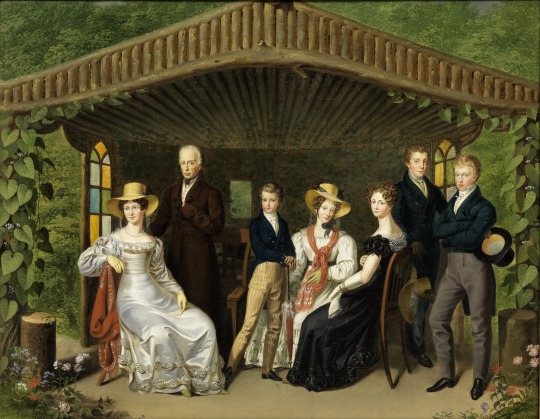

The Imperial Family Around the Duc de Reichstadt in a Gazebo by Leopold Fertbauer, 1926.
From left to right: Caroline Augusta of Bavaria, Empress of Austria; Francis I, Emperor of Austria; Napoleon II of France, Duke of Reichstadt; Princess Sophie of Bavaria, Archduchess of Austria; Marie-Louise of Austria, Duchess of Parma; Ferdinand I of Austria; and Archduke Franz Karl of Austria.
link

32 notes
·
View notes
Text
The Family <3




emperor Franz Joseph Of Austria And King Of Hungary (1816-1905)
age: 35
height: 6’4
birthday: 18th august
early life:
Franz Joseph was born on 18 August 1816 in the Schönbrunn Palace in Vienna (on the 65th anniversary of the death of Francis of Lorraine) as the eldest son of Archduke Franz Karl (the younger son of Francis I), and his wife Sophie, Princess of Bavaria. Because his uncle, reigning from 1835 as the Emperor Ferdinand, was disabled by seizures, and his father unambitious and retiring, the mother of the young Archduke "Franzi" brought him up as a future emperor, with emphasis on devotion, responsibility and diligence.

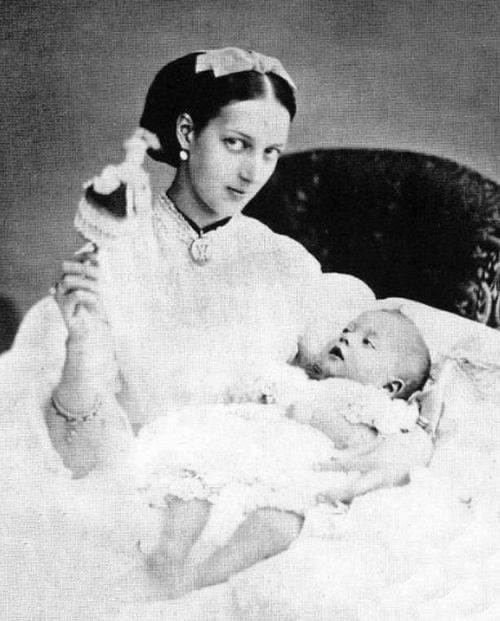
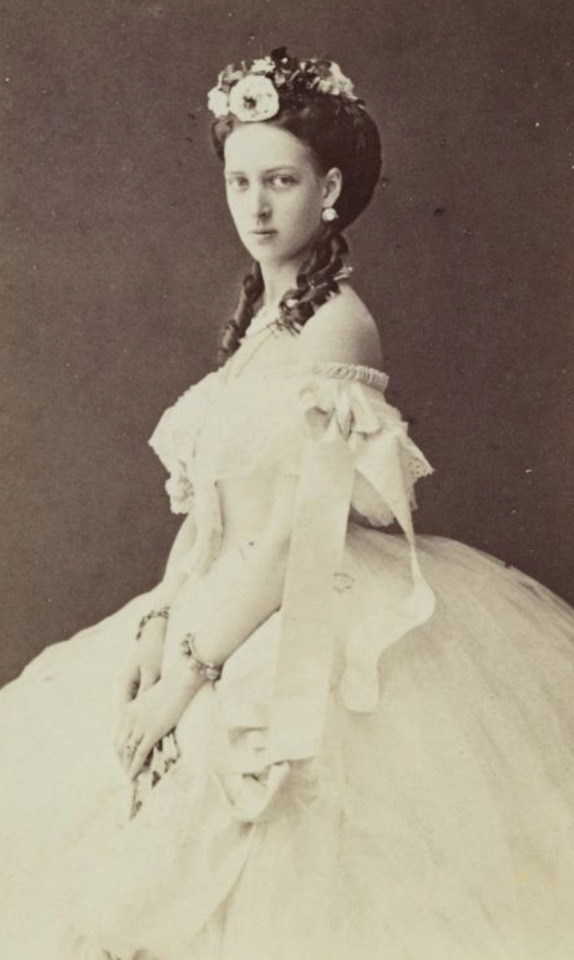
Empress Alexandra Of Austria, Queen Of Hungary (1816-1907)
age: 35
height: 5’10
birthday: 8th March
Early Life:
Princess Alexandra Caroline Marie Charlotte Louise Julia, or "Alix", as her immediate family knew her, was born at the Yellow Palace, an 18th-century town house at 18 Amaliegade, immediately adjacent to the Amalienborg Palacecomplex in Copenhagen.[1] Her father was Prince Christian of Schleswig-Holstein-Sonderburg-Glücksburg and her mother was Princess Louise of Hesse-Kassel.[2] She had five siblings: Frederick, William (later George I of Greece), Dagmar (later Empress of Russia), Thyra and Valdemar.
Her father's family was a distant cadet branch of the Danish royal House of Oldenburg, which was descended from King Christian III. Although they were of royal blood,[a] the family lived a comparatively modest life. They did not possess great wealth; her father's income from an army commission was about £800 per year and their house was a rent-free grace and favour property. Occasionally, Hans Christian Andersen was invited to call and tell the children stories before bedtime.

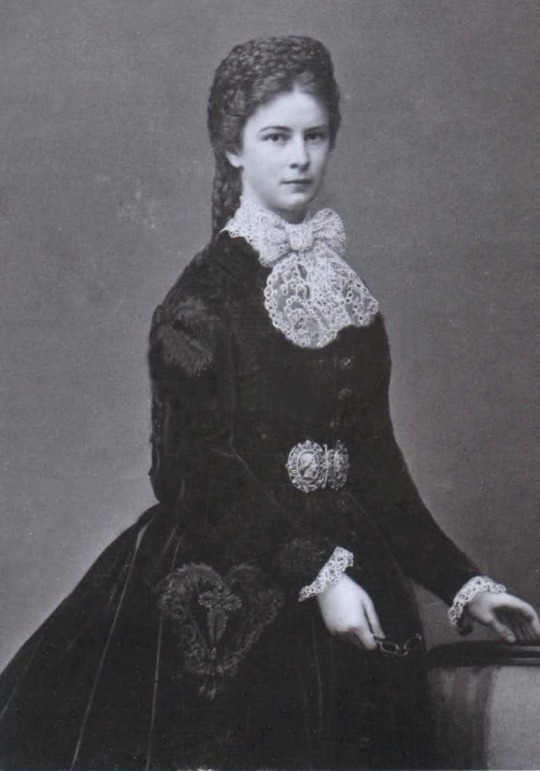

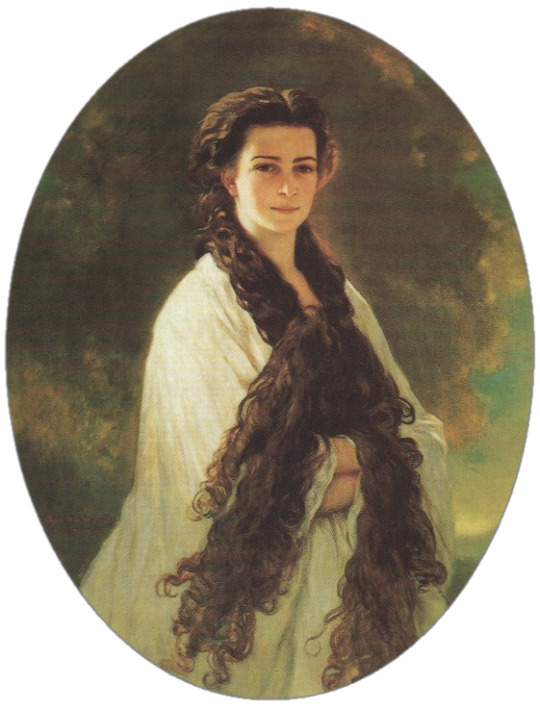

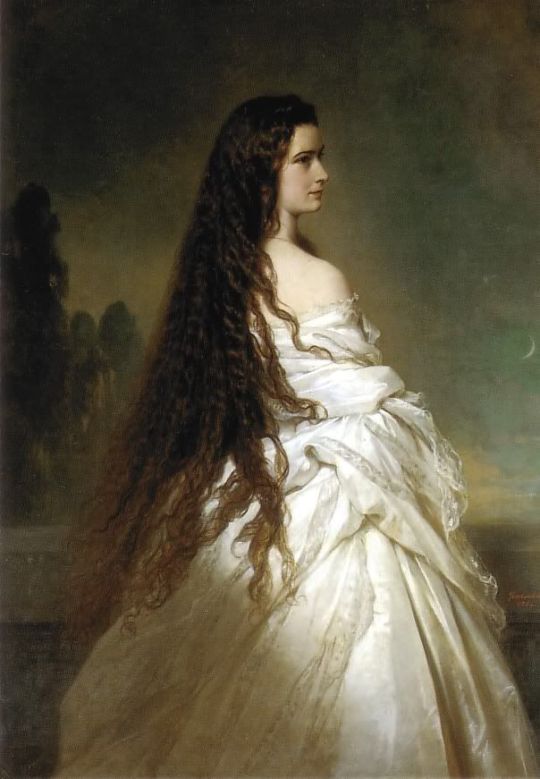
GrandDuchess Elisabeth Of Austria, Later Empress Of Austria And Queen Of Hungary at 19 Years old (1837-1927)
age: 14-15
height: 5’8
birthday: 24th December

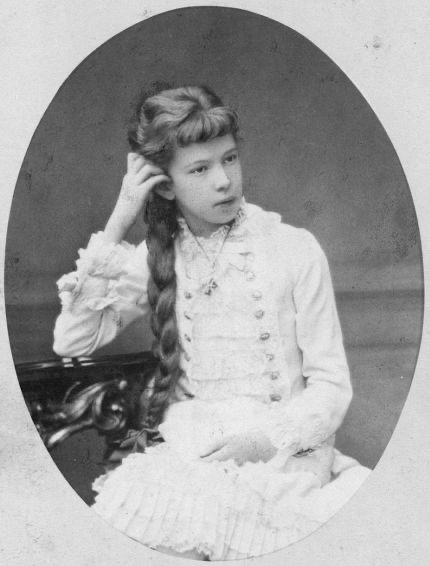
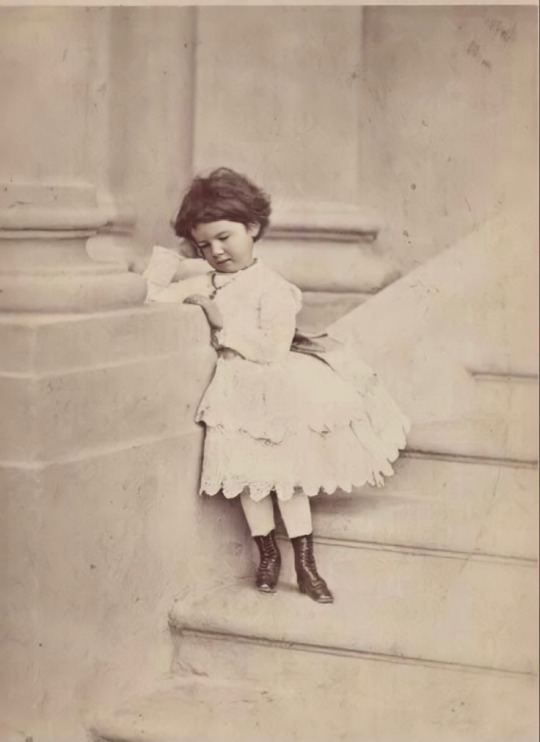
Marie Valerie (1840-1943) lmao Valerie lived a long time
Height: 5’3
age: 10
birthday: 24th april
5 notes
·
View notes
Text
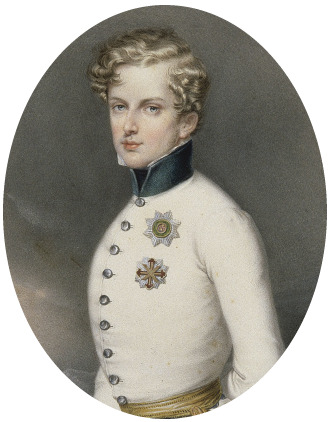

The Archduchess saw the Duke of Reichstadt for the last time on the morning of 4 July. Two days later on 6 July 1832, she gave birth to a second son. Once more the bells of the Vienna churches rang out in jubilation, the guns thundered, the flags waved and cheering crowds gathered outside the Castle of Schonbrurm. But in spite of an easy and comparatively painless birth, the young mother was afterwards so physically and mentally exhausted that she spent her days in tears. The baby was given the names of Ferdinand Maximilian, Ferdinand after his godfather the Crown Prince and Maximilian in memory of Sophia's father. The Bishop of Eylau who officiated at the christening, relates that when he visited the Archduchess after the ceremony, she never spoke to him of herself, her husband or her child but only of the Duke of Reichstadt, begging the Bishop to visit him and to help him with his prayers.
Franz Reichstadt was seen to smile for the last time when he was given the news of Ferdinand Maximilian's birth. The will to live, which till now had enabled him to fight his disease, had finally deserted him. In June he was still talking of convalescing in the sun of Naples, but by the middle of July he was resigned to die. It was as well for Sophia that she was spared those last tragic days, that she did not have to hear that terrible, tearing cough which left him without the strength to speak. She was still confined to her room when the end came on the 22 July and only his mother Marie Louise and the Archduke Franz Karl were present at his deathbed. The latter had the unenviable task of announcing Reichstadt's death first to his wife, then to the Emperor, who in a heartbroken letter to Prince Metternich wrote, "My grandson's sufferings were such that death came as a welcome release. It may also have been a blessing for my children and for the peace of the world. But for my part I shall always miss him."
The Emperor Franz was an old man with very few years to live, but the Archduchess Sophia was a young woman who had buried her youth in the Duke of Reichstadt's grave.
Haslip, Joan (1971). The Crown of Mexico: Maximilian and his Empress Carlota
#i've been thinking about them the whole day and now I'm emotional#sophie of bavaria archduchess of austria#napoleon ii duke of reichstadt#maximilian i of mexico#franz i of austria#archduke franz karl of austria#author: joan haslip#the crown of mexico: maximilian and his empress carlota (1972)#historicwomendaily
68 notes
·
View notes
Photo


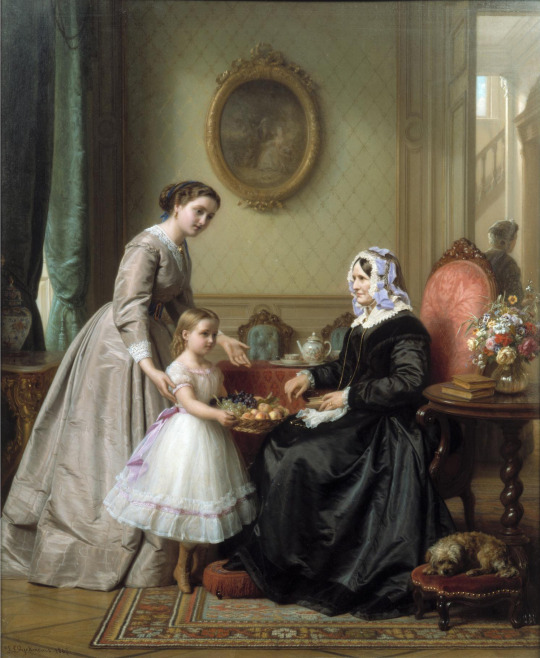

Images of 1860s dress (from top to bottom) -
1860 (reproduced in 1889 by Gustav William Henry Mullins) Austrian imperial family group photo (Royal Collection RCIN 2906856). From their Web site 2000X1586 @72 822kj. Photograph of a group portrait of members of the Austrian Royal family. In the back row, standing, from left to right, are Emperor Franz Josef of Austria, Archduke Maximilian (later the ill-fated Emperor Maximillian of Mexico), Charlotte, Archduchess Maximilian (later Empress Carlota), Archduke Ludwig of Austria and Archduke Karl Ludwig of Austria. In the front row, seated, from left to right are Empress Elisabeth of Austria (Sisi) with Crown Prince Rudolf on her lap, Archduchess Gisela of Bavaria, Archduchess Sophie of Austria and Franz Karl, Archduke of Austria.
1860-1865 Young woman by Raimundo de Madrazo (Setdart - 13Jul22 auction Lot 62). From invaluable.com-auction-lot-raimundo-de-madrazo-y-garreta-rome-1841-versaille-62-c-c4249d59ad; erased spots w Pshop 2867X3544 @150 1.7Mj.
1867 Grandmother's birthday by Josephus Laurentius Dyckmans (V&A). From tumblr.com/blog/view/the-perdita 1495X1823 @72 717kj.
1868 Luise Limbach by Conrad Freyberg (Braunschweigisches Landesmuseum - specific location ?). From Wikimedia 2544X3120 @299 2.9Mj.
#1860s fashion#early Victorian fashion#Gustav William Henry Mullins#Empress Elisabeth#Sisi#Empress Carlota#Archduchess Sophie#Raimundo de Madrazo#Josephus Laurentius Dyckmans#Luise Limbach#Conrad Freyberg#feathered hat#high neckline#straight hair#bonnet#crinoline#off shoulder neckline#quarter-length sleeves#chignon#cap#lace collar#banana sleeves#back-flared cuffs#curly hair#side curl coiffure#off shoulder V neckline#pleated bertha#lace bertha#lace cuffs#V waistline
11 notes
·
View notes
Text
Hunting after the war
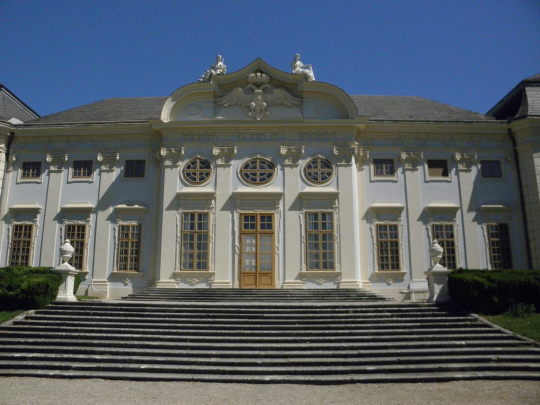
When the architect Johann Lukas von Hildebrandt began planning the construction of Schloß Halbturn in 1701, it was only a hunting lodge and Austria was still under the rule of Emperor Joseph I. Located on the borderlands between the Austrian and Hungarian possessions, it was only a short distance from Lake Neusiedl.
When the original construction was completed in 1711, a new emperor assumed the highest office in the Holy Roman-Germanic Empire, Karl VI, who ended his Spanish adventure by attempting to become the effective king of Spain under the name of Charles III. Halbturn was to become his hunting lodge for the new times that awaited him.
However, the documented existence of Halbturn dates back at least to the 15th century, when the Counts of Bazin (Bösing, in German, the present-day Slovak town of Pezinok) disputed the boundaries of their possessions with the abbey of Heiligenkreuz. On that occasion, the Hungarian king Mátyás Hunyadi, better known as Matthias Corvinus, was asked to act as arbitrator, and the abbey benefited from property and vineyards.
The area around Halbturn was present in Roman times, documented by a cemetery from the Imperial period and a Roman villa. A Jewish community is believed to have existed as early as the 3rd century.
The name Halbturn is identified with a half-ruined tower or damaged fortification. Its origin may have served to protect the road from Neusiedl to Altenburg (the modern Hungarian town of Mosonmagyaróvár) and from Ödenburg (Sopron in Hungarian) to Preßburg (the German name for the present-day Slovak capital, Bratislava).
In 1516, the Bazin family died out and their possessions reverted to the crown. The then king Lajos II of Hungary and Bohemia (under the name Ludvík I) bequeathed the estate to his wife Maria, sister of the Austrian Archduke Ferdinand I, who took over after her husband's death at the hands of the Turks at the battle of Mohács (1526).
When Queen Maria died in 1558, the possession of Halbturn passed to the Austrian Habsburgs, who already held the Imperial, Bohemian, Croatian and Hungarian crowns.
But let us return to the 18th century. During the reign of Karl VI's daughter Maria Theresia, Halbturn was rebuilt under the direction of the architect Franz Anton Hillebrandt as the summer residence of the regents of Hungary, Archduchess Maria Christina and her husband, Albert of Saxony-Teschen.
In the 19th century, the usual name was the Hungarian Féltorony, an evolution of Felthorom, documented in the 15th century, until after World War I most of the territory surrounding Lake Neusiedl became the present-day federal state of Burgenland, which was incorporated into the Republic of Austria in 1921.
2 notes
·
View notes
Text
Friends, enemies, comrades, Jacobins, Monarchist, Bonapartists, gather round. We have an important announcement:
The continent is beset with war. A tenacious general from Corsica has ignited conflict from Madrid to Moscow and made ancient dynasties tremble. Depending on your particular political leanings, this is either the triumph of a great man out of the chaos of The Terror, a betrayal of the values of the French Revolution, or the rule of the greatest upstart tyrant since Caesar.
But, our grand tournament is here to ask the most important question: Now that the flower of European nobility is arrayed on the battlefield in the sexiest uniforms that European history has yet produced (or indeed, may ever produce), who is the most fuckable?
The bracket is here: full bracket and just quadrant I
Want to nominate someone from the Western Hemisphere who was involved in the ever so sexy dismantling of the Spanish empire? (or the Portuguese or French American colonies as well) You can do it here
The People have created this list of nominees:
France:
Jean Lannes
Josephine de Beauharnais
Thérésa Tallien
Jean-Andoche Junot
Joseph Fouché
Charles Maurice de Talleyrand
Joachim Murat
Michel Ney
Jean-Baptiste Bernadotte (Charles XIV of Sweden)
Louis-Francois Lejeune
Pierre Jacques Étienne Cambrinne
Napoleon I
Marshal Louis-Gabriel Suchet
Jacques de Trobriand
Jean de dieu soult.
François-Étienne-Christophe Kellermann
17.Louis Davout
Pauline Bonaparte, Duchess of Guastalla
Eugène de Beauharnais
Jean-Baptiste Bessières
Antoine-Jean Gros
Jérôme Bonaparte
Andrea Masséna
Antoine Charles Louis de Lasalle
Germaine de Staël
Thomas-Alexandre Dumas
René de Traviere (The Purple Mask)
Claude Victor Perrin
Laurent de Gouvion Saint-Cyr
François Joseph Lefebvre
Major Andre Cotard (Hornblower Series)
Edouard Mortier
Hippolyte Charles
Nicolas Charles Oudinot
Emmanuel de Grouchy
Pierre-Charles Villeneuve
Géraud Duroc
Georges Pontmercy (Les Mis)
Auguste Frédéric Louis Viesse de Marmont
Juliette Récamier
Bon-Adrien Jeannot de Moncey
Louis-Alexandre Berthier
Étienne Jacques-Joseph-Alexandre Macdonald
Jean-Mathieu-Philibert Sérurier
Catherine Dominique de Pérignon
Guillaume Marie-Anne Brune
Jean-Baptiste Jourdan
Charles-Pierre Augereau
Auguste François-Marie de Colbert-Chabanais
England:
Richard Sharpe (The Sharpe Series)
Tom Pullings (Master and Commander)
Arthur Wellesley, 1st Duke of Wellington
Jonathan Strange (Jonathan Strange & Mr. Norrell)
Captain Jack Aubrey (Aubrey/Maturin books)
Horatio Hornblower (the Hornblower Books)
William Laurence (The Temeraire Series)
Henry Paget, 1st Marquess of Anglesey
Beau Brummell
Emma, Lady Hamilton
Benjamin Bathurst
Horatio Nelson
Admiral Edward Pellew
Sir Philip Bowes Vere Broke
Sidney Smith
Percy Smythe, 6th Viscount Strangford
George IV
Capt. Anthony Trumbull (The Pride and the Passion)
Barbara Childe (An Infamous Army)
Doctor Maturin (Aubrey/Maturin books)
William Pitt the Younger
Robert Stewart, 2nd Marquess of Londonderry (Lord Castlereagh)
George Canning
Scotland:
Thomas Cochrane
Colquhoun Grant
Ireland:
Arthur O'Connor
Thomas Russell
Robert Emmet
Austria:
Klemens von Metternich
Friedrich Bianchi, Duke of Casalanza
Franz I/II
Archduke Karl
Marie Louise
Franz Grillparzer
Wilhelmine von Biron
Poland:
Wincenty Krasiński
Józef Antoni Poniatowski
Józef Zajączek
Maria Walewska
Władysław Franciszek Jabłonowski
Adam Jerzy Czartoryski
Antoni Amilkar Kosiński
Zofia Czartoryska-Zamoyska
Stanislaw Kurcyusz
Russia:
Alexander I Pavlovich
Alexander Andreevich Durov
Prince Andrei (War and Peace)
Pyotr Bagration
Mikhail Miloradovich
Levin August von Bennigsen
Pavel Stroganov
Empress Elizabeth Alexeievna
Karl Wilhelm von Toll
Dmitri Kuruta
Alexander Alexeevich Tuchkov
Barclay de Tolly
Fyodor Grigorevich Gogel
Ekaterina Pavlovna Bagration
Ippolit Kuragin (War and Peace)
Prussia:
Louise von Mecklenburg-Strelitz
Gebard von Blücher
Carl von Clausewitz
Frederick William III
Gerhard von Scharnhorst
Louis Ferdinand of Prussia
Friederike of Mecklenburg-Strelitz
Alexander von Humboldt
Dorothea von Biron
The Netherlands:
Ida St Elme
Wiliam, Prince of Orange
The Papal States:
Pius VII
Portugal:
João Severiano Maciel da Costa
Spain:
Juan Martín Díez
José de Palafox
Inês Bilbatua (Goya's Ghosts)
Haiti:
Alexandre Pétion
Sardinia:
Vittorio Emanuele I
Lombardy:
Alessandro Manzoni
Denmark:
Frederik VI
Sweden:
Gustav IV Adolph
45 notes
·
View notes
Text
Events 6.28
1098 – Fighters of the First Crusade defeat Kerbogha of Mosul at the battle of Antioch.
1360 – Muhammed VI becomes the tenth Nasrid king of Granada after killing his brother-in-law Ismail II.
1461 – Edward, Earl of March, is crowned King Edward IV of England.
1495 – A French force heavily defeats a much larger Neapolitan and Spanish army at the battle of Seminara, leading to the creation of the Tercios by Gonzalo de Córdoba.
1519 – Charles V is elected Emperor of the Holy Roman Empire.
1575 – Sengoku period of Japan: The combined forces of Oda Nobunaga and Tokugawa Ieyasu are victorious in the Battle of Nagashino.
1635 – Guadeloupe becomes a French colony.
1651 – The Battle of Berestechko between Poland and Ukraine starts.
1745 – A New England colonial army captures the French fortifications at Louisbourg (New Style).
1776 – American Revolutionary War: The Battle of Sullivan's Island ends with the American victory, leading to the commemoration of Carolina Day.
1776 – American Revolutionary War: Thomas Hickey, Continental Army private and bodyguard to General George Washington, is hanged for mutiny and sedition.
1778 – American Revolutionary War: The American Continentals engage the British in the Battle of Monmouth Courthouse resulting in standstill and British withdrawal under cover of darkness.
1797 – French troops disembark in Corfu, beginning the French rule in the Ionian Islands.
1807 – Second British invasion of the Río de la Plata; John Whitelocke lands at Ensenada on an attempt to recapture Buenos Aires and is defeated by the locals.
1838 – Coronation of Queen Victoria of the United Kingdom.
1841 – The Paris Opera Ballet premieres Giselle in the Salle Le Peletier.
1855 – Sigma Chi fraternity is founded in North America.
1859 – The first conformation dog show is held in Newcastle upon Tyne, England.
1865 – The Army of the Potomac is disbanded.
1870 – The US Congress establishes the first federal holidays (New Year Day, July 4th, Thanksgiving, and Christmas).
1880 – Australian bushranger Ned Kelly is captured at Glenrowan.
1881 – The Austro–Serbian Alliance of 1881 is secretly signed.
1882 – The Anglo-French Convention of 1882 marks the territorial boundaries between Guinea and Sierra Leone.
1894 – Labor Day becomes an official US holiday.
1895 – The United States Court of Private Land Claims rules James Reavis’s claim to Barony of Arizona is "wholly fictitious and fraudulent."
1896 – An explosion in the Newton Coal Company's Twin Shaft Mine in Pittston, Pennsylvania results in a massive cave-in that kills 58 miners.
1902 – The U.S. Congress passes the Spooner Act, authorizing President Theodore Roosevelt to acquire rights from Colombia for the Panama Canal.
1904 – The SS Norge runs aground on Hasselwood Rock in the North Atlantic 430 kilometres (270 mi) northwest of Ireland. More than 635 people die during the sinking.
1911 – The Nakhla meteorite, the first one to suggest signs of aqueous processes on Mars, falls to Earth, landing in Egypt.
1914 – Archduke Franz Ferdinand of Austria and his wife Sophie are assassinated in Sarajevo; this is the casus belli of World War I.
1917 – World War I: Greece joins the Allied powers.
1919 – The Treaty of Versailles is signed, ending the state of war between Germany and the Allies of World War I.
1921 – Serbian King Alexander I proclaims the new constitution of the Kingdom of Serbs, Croats and Slovenes, known thereafter as the Vidovdan Constitution.
1922 – The Irish Civil War begins with the shelling of the Four Courts in Dublin by Free State forces.
1926 – Mercedes-Benz is formed by Gottlieb Daimler and Karl Benz merging their two companies.
1936 – The Japanese puppet state of Mengjiang is formed in northern China.
1940 – Romania cedes Bessarabia and Northern Bukovina to the Soviet Union after facing an ultimatum.
1942 – World War II: Nazi Germany starts its strategic summer offensive against the Soviet Union, codenamed Case Blue.
1945 – Poland's Soviet-allied Provisional Government of National Unity is formed over a month after V-E Day.
1948 – Cold War: The Tito–Stalin Split results in the expulsion of the League of Communists of Yugoslavia from the Cominform.
1948 – Boxer Dick Turpin beats Vince Hawkins at Villa Park in Birmingham to become the first black British boxing champion in the modern era.
1950 – Korean War: Suspected communist sympathizers (between 60,000 and 200,000) are executed in the Bodo League massacre.
1950 – Korean War: Packed with its own refugees fleeing Seoul and leaving their 5th Division stranded, South Korean forces blow up the Hangang Bridge in an attempt to slow North Korea's offensive. The city falls later that day.
1950 – Korean War: The Korean People's Army kills almost a thousand doctors, nurses, inpatient civilians and wounded soldiers in the Seoul National University Hospital massacre.
1956 – In Poznań, workers from HCP factory go to the streets, sparking one of the first major protests against communist government both in Poland and Europe.
1964 – Malcolm X forms the Organization of Afro-American Unity.
1969 – Stonewall riots begin in New York City, marking the start of the Gay Rights Movement.
1973 – Elections are held for the Northern Ireland Assembly, which will lead to power-sharing between unionists and nationalists in Northern Ireland for the first time.
1976 – The Angolan court sentences US and UK mercenaries to death sentences and prison terms in the Luanda Trial.
1978 – The United States Supreme Court, in Regents of the University of California v. Bakke bars quota systems in college admissions.
1981 – A powerful bomb explodes in Tehran, killing 73 officials of the Islamic Republican Party.
1982 – Aeroflot Flight 8641 crashes in Mazyr, Belarus, killing 132 people.
1987 – For the first time in military history, a civilian population is targeted for chemical attack when Iraqi warplanes bombed the Iranian town of Sardasht.
1989 – On the 600th anniversary of the Battle of Kosovo, Slobodan Milošević delivers the Gazimestan speech at the site of the historic battle.
1997 – Holyfield–Tyson II: Mike Tyson is disqualified in the third round for biting a piece off Evander Holyfield's ear.
2001 – Slobodan Milošević is extradited to the ICTY in The Hague to stand trial.
2004 – Iraq War: Sovereign power is handed to the interim government of Iraq by the Coalition Provisional Authority, ending the U.S.-led rule of that nation.
2009 – Honduran president Manuel Zelaya is ousted by a local military coup following a failed request to hold a referendum to rewrite the Honduran Constitution. This was the start of the 2009 Honduran constitutional crisis.
2016 – A terrorist attack in Turkey's Istanbul Atatürk Airport kills 42 people and injures more than 230 others.
0 notes
Text
1914-Sarajevo
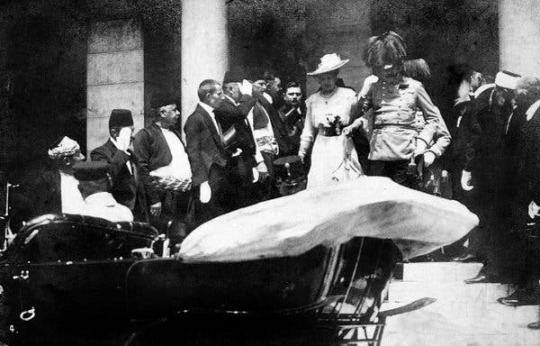

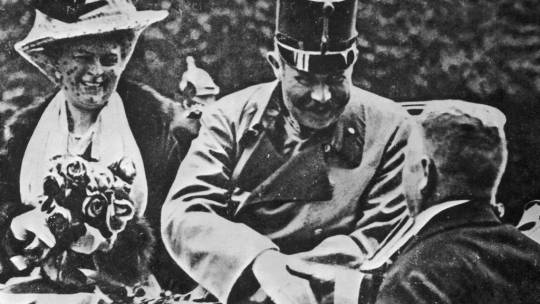

*Archduke Franz Ferdinand Carl Ludwig Joseph Maria of Austria[a] (18 December 1863 – 28 June 1914) was the heir presumptive to the throne of Austria-Hungary. Franz Ferdinand was the eldest son of Archduke Karl Ludwig of Austria, the younger brother of Emperor Franz Joseph I of Austria. Following the death of Crown Prince Rudolf in 1889 and the death of Karl Ludwig in 1896, Franz Ferdinand became the heir presumptive to the Austro-Hungarian throne. His courtship of Sophie Chotek, a lady-in-waiting, caused conflict within the imperial household, and their morganatic marriage in 1900 was only allowed after he renounced his descendants' rights to the throne. Franz Ferdinand held significant influence over the military, and in 1913 he was appointed inspector general of the Austro-Hungarian armed forces.
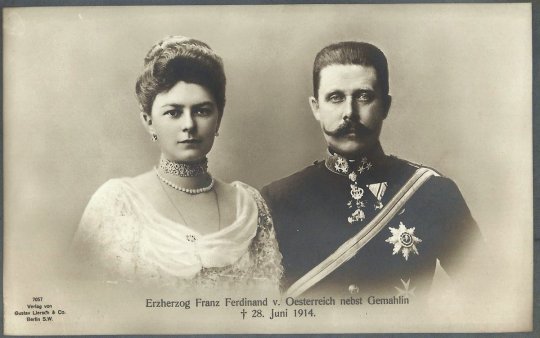
*Sophie, Duchess of Hohenberg (German: Sophie Marie Josephine Albina Gräfin Chotek von Chotkow und Wognin; Czech: Žofie Marie Josefína Albína hraběnka Chotková z Chotkova a Vojnína; 1 March 1868 – 28 June 1914) was the wife of Archduke Franz Ferdinand of Austria, the heir to the Austro-Hungarian throne. She was born in Stuttgart as the fourth daughter of Count Bohuslav Chotek von Chotkow und Wognin and his wife, Countess Wilhelmine Kinsky von Wchinitz und Tettau (1838–1886). Her father was a Bohemian aristocrat, by birth member of an old House of Chotek, who served as Austrian Ambassador to the royal courts Stuttgart, Saint Petersburg and Brussels. As a young woman, Sophie became a lady-in-waiting to Archduchess Isabella,[3] the wife of Archduke Friedrich, Duke of Teschen, head of the Bohemian cadet branch of the House of Habsburg-Lorraine.
#Jun.28.1914#date of death#Archduke Franz Ferdinand of Austria#Sophie-Duchess of Hohenberg#Sarajevo#Casus belli#history today
1 note
·
View note